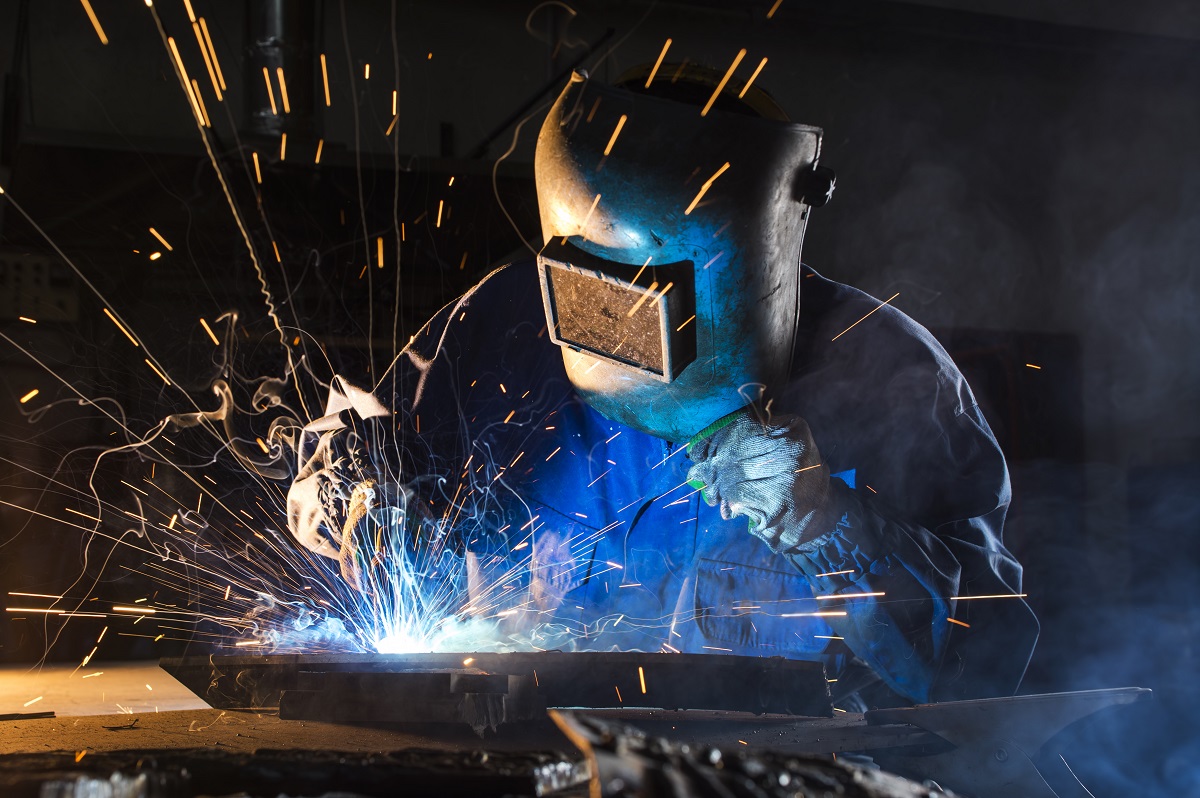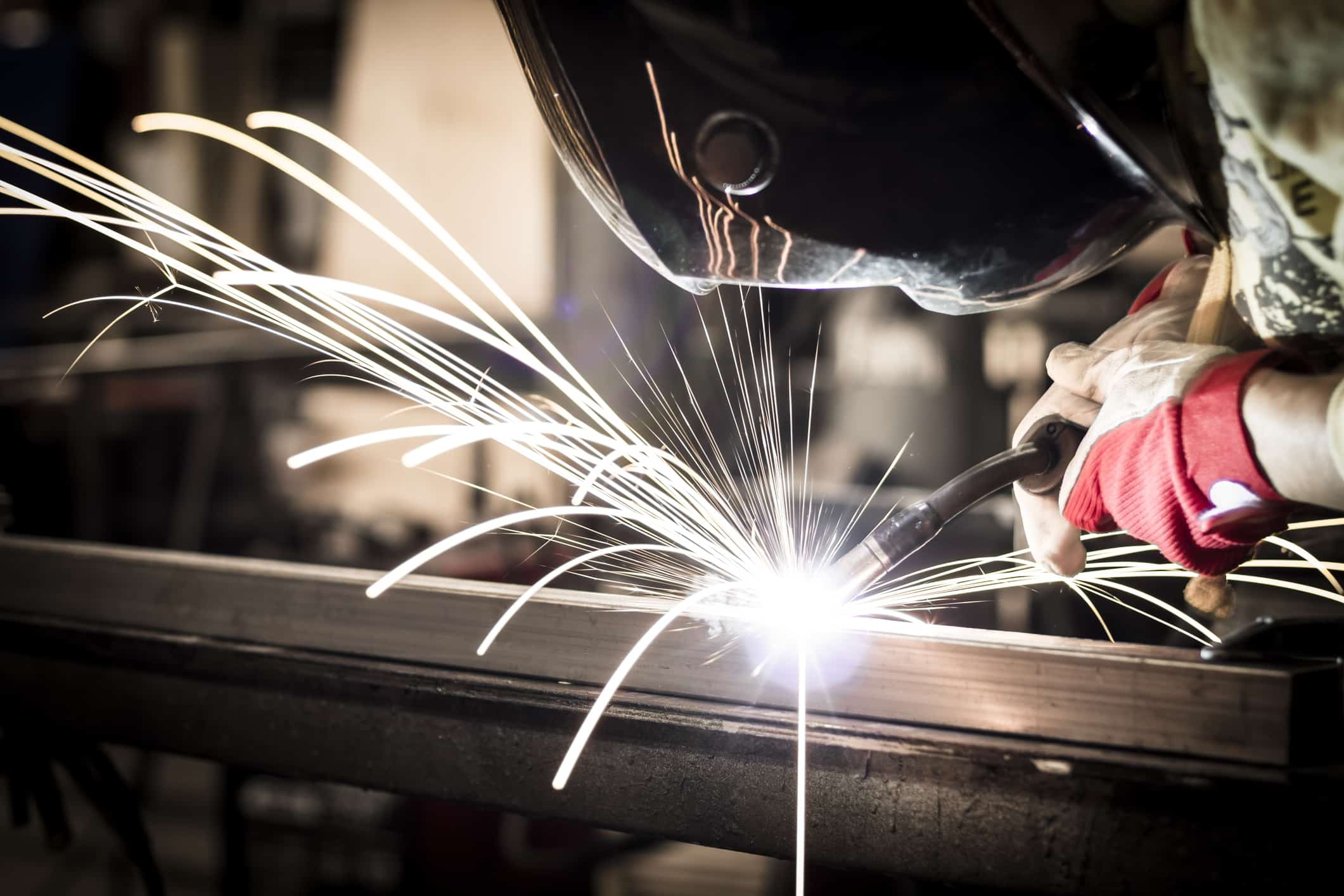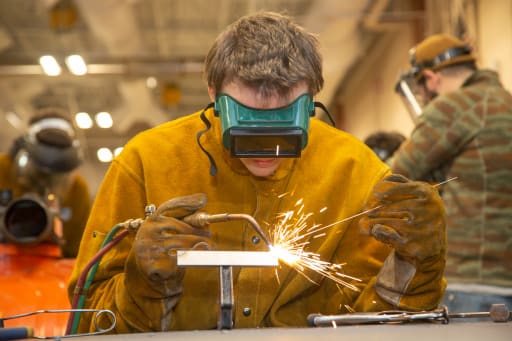Usual Welding Repair Issues and Exactly How to Address Them Properly
Welding repairs typically encounter a series of problems that can threaten the integrity of the end product. Common problems include poor infiltration, porosity, and imbalance, amongst others. Each issue presents special obstacles that call for particular strategies for resolution. Recognizing these concerns is necessary for welders intending to enhance their abilities and outcomes. This conversation will certainly discover these usual welding repair service concerns and effective methods to resolve them.
Inadequate Penetration
Insufficient penetration happens when the weld steel stops working to completely fuse with the base material, resulting in weak joints and possible structural failings. This concern usually comes from insufficient warmth input, wrong electrode angle, or incorrect welding speed. Welders might run into inadequate infiltration as a result of a miscalculation of the necessary parameters for a details product density or type. Additionally, contamination on the base product's surface can impede efficient bonding, aggravating the problem. To resolve poor infiltration, welders need to assure suitable settings on their devices and preserve a tidy work surface area. Normal examination of welds is suggested to recognize any deficiencies early, permitting for timely corrections and the avoidance of jeopardized structural honesty in bonded settings up.
Porosity
Porosity is an usual flaw in welded joints that materializes as tiny gas bubbles caught within the weld metal. This defect can endanger the stability of the weld, causing lowered strength and possible failing under stress and anxiety. Montana Mobile Welding and Repair. Porosity usually develops from contamination, moisture, or improper welding techniques, which allow gases to get away into the liquified weld pool. To address porosity, welders ought to assure proper surface prep work, maintain a clean working setting, and make use of appropriate welding criteria. In addition, selecting the appropriate filler material and shielding gas can reduce gas entrapment. Regular inspection and testing of welds can help identify porosity early, assuring timely corrective activities are taken, thereby maintaining the high quality and dependability of the bonded framework
Misalignment
Misalignment in welding can occur from various variables, including inappropriate configuration and thermal development. Understanding the origin triggers is necessary for reliable resolution. Numerous improvement techniques are readily available to realign elements and ensure architectural stability.
Reasons for Imbalance
Welding imbalance usually originates from a range of underlying concerns that can endanger architectural stability. One primary reason is improper fit-up of components before welding, which can result in voids and unequal surface areas. Variants in thermal development during the welding procedure can likewise cause distortion, particularly if the materials being joined have different coefficients of expansion. Furthermore, inadequate fixturing and clamping may fall short to hold parts safely in location, resulting in motion throughout welding. Inadequately kept tools, including welding devices and tools, may introduce disparities in the weld bead, further contributing to misalignment. Operator mistake, stemming from inadequate training or experience, can additionally play a significant duty in producing misaligned welds.

Correction Techniques Offered
Resolving imbalance efficiently needs a mix of rehabilitative strategies tailored to the details concerns handy. One typical technique is making use of jigs or components to hold elements in the correct setting during welding, making certain regular positioning. Additionally, pre-heating the products can assist decrease distortion and boost fit-up. For significant misalignment, mechanical realignment methods, such as using hydraulic jacks or clamps, can be utilized to fix the position prior to welding. Post-weld warmth therapy may additionally be essential to soothe stresses triggered by imbalance. Finally, mindful examination and change during the configuration phase can prevent imbalance concerns from ending up being substantial troubles, advertising a smoother welding process and improving general architectural stability.
Distortion
Distortion is an usual challenge in welding that can arise from numerous aspects, including unequal cooling and heating. Recognizing the causes of distortion is crucial for implementing reliable prevention techniques. Addressing this concern not only improves structural integrity however likewise enhances the overall top quality of the weld.
Root causes of Distortion
When subjected to the extreme warm of welding, products typically go through adjustments that can cause distortion. This phenomenon primarily arises from thermal development and contraction during the welding procedure. As the weld location warms up, the product increases; upon air conditioning, it acquires, which can create internal tensions. In addition, uneven home heating throughout a workpiece can worsen these stresses, leading to warping or flexing. The kind of material additionally plays a significant role; metals with varying thermal conductivity and coefficients of expansion might react in different ways, leading to uncertain distortions. In addition, poor joint layout and insufficient fixturing can contribute to misalignment during welding, raising the chance of distortion. Recognizing these reasons is important for efficient welding fixing and prevention methods.
Avoidance Techniques
Efficient prevention techniques for distortion throughout welding focus on controlling warmth input and ensuring appropriate joint layout. Keeping a regular warm input helps to reduce thermal development and tightening, which can bring about distortion. Using techniques such as pre-heating the work surface can also reduce the temperature level slope, promoting consistent home heating. Additionally, choosing appropriate joint styles, such as T-joints or lap joints, can enhance stability and decrease stress and anxiety concentrations. Applying appropriate fixturing to protect the workpieces in position further aids in preserving placement throughout the welding process. Ultimately, staggered welding sequences can distribute warm much more equally, stopping localized distortion. By using these techniques, welders can more info greatly reduce the possibility of distortion and boost the overall high quality of their welds.
Breaking
Breaking is an usual concern come across in welding repairs, typically arising from different elements such as inappropriate air conditioning rates, material selection, or insufficient joint preparation. The occurrence of cracks can significantly compromise the honesty of the weld, causing possible failings throughout operation. To resolve this issue, welders have to initially analyze the source, making sure that products work and suitably selected for the particular application. In addition, regulating the cooling price during the welding process is vital; rapid cooling can induce stress and anxiety and result in cracking. Correct joint design and preparation also add to lessening the danger. Implementing these methods can enhance weld top quality and durability, eventually minimizing the chance of splitting in completed weldments.

Insufficient Combination
A substantial concern in welding repairs is insufficient fusion, which happens when the weld metal does not effectively bond with the base material or previous weld passes - Belgrade Welding. This problem can lead to weaknesses in the joint, possibly compromising the integrity of the bonded framework. Factors adding to incomplete blend consist of inadequate warmth input, inappropriate welding method, and contamination of the surface areas being joined. To resolve this issue effectively, welders should guarantee correct pre-weld cleansing and surface prep work, as well as change their welding parameters to attain adequate penetration and blend. Routine examination throughout the welding procedure can likewise assist identify insufficient blend early, permitting prompt restorative steps to improve the total quality of the weld
Overheating
While welding repair services can boost structural integrity, overheating presents a considerable challenge that can result in material destruction. Too much warmth throughout welding can change the mechanical residential properties of steels, leading to lowered strength, raised brittleness, and warping. This phenomenon is specifically essential in high-stress applications where architectural dependability is vital. Identifying getting too hot can entail visual inspections for staining or distortion, along with keeping track of temperature level during the welding process. To alleviate the dangers connected with overheating, welders must utilize ideal methods, such as managing warm input, readjusting traveling speed, and making use of appropriate filler materials. Furthermore, applying pre- and post-weld warm treatments can help recover product buildings and enhance the total top quality of the repair service, making sure long-lasting performance and safety and security.
Often Asked Inquiries
What Are the Typical Signs of a Welding Defect?

How Can I Examine My Welds for Top quality?
To examine welds for quality, one can use visual evaluations, ultrasonic screening, and radiographic methods. Each strategy ensures architectural integrity, identifies issues, and confirms adherence to defined criteria, ultimately enhancing the dependability of the bonded joints.
What Safety Preventative Measures Should I Take While Welding?
When welding, one ought to focus on safety and security by wearing suitable individual safety equipment, guaranteeing proper ventilation, safeguarding combustible products away, preserving a clean workspace, and recognizing environments to avoid injuries and accidents.
Can I Repair a Weld Without Redoing the Entire Joint?
Fixing a weld without redoing the whole joint is possible, depending upon the damages (Montana Mobile Welding and Repair Belgrade). Techniques such as grinding, adding filler material, or using a welding procedure can efficiently attend to details problems while preserving the bordering framework
What Devices Are Important for Efficient Welding Repair Works?
Vital tools for efficient welding repair work consist of a welding maker, wire brush, grinder, protective gear, clamps, and filler materials. Each device plays a vital role in ensuring high quality and safety and security throughout the repair work process. Porosity commonly occurs from contamination, wetness, or inappropriate welding strategies, which enable gases to run away right into the molten weld swimming pool. Inadequately kept devices, including welding machines and tools, might present inconsistencies in the weld bead, more adding to imbalance. When subjected to the intense warmth of welding, materials typically undertake changes that can lead to distortion. Fracturing is a typical concern experienced in welding fixings, commonly resulting from different factors such as incorrect cooling prices, material option, or insufficient joint prep work. A significant problem in welding repair services is insufficient blend, which happens when the weld steel does not adequately bond with the base material or previous weld passes.